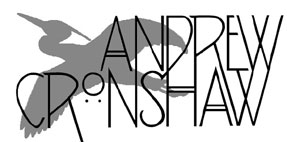
- Andrew Cronshaw website -
- Andrew Cronshaw MySpace -
- Cloud Valley Music website -
- Andrew Cronshaw website -
- Andrew Cronshaw MySpace -
- Back to Reviews Introduction page -
Written in
fRoots
issue 223/224, 2002
VARIOUS ARTISTS
The Great Awakening - Music of the Eastern Khanty
Global Music Centre GMCD 0107 (2001)
A tune on four twangy notes in a whole-tone scale far from equal temperament, on
the slack-tuned metal strings of a nearly extinct nine-stringed angle-harp, made
from a whole cedar-root and in shape somewhere between a boat and a crane, whose
name in the Eastern Khanty language means “crane-head-wood”. The player, Timofey
Ivanovich Kechimov, accompanies his exposition of the tune with a steady
scratching unpitched pulse on, presumably, a low string. He stops playing, then
delivers the same tune in a fractured voice as a vocal recitative, his voice
matching not only the intonation of the harp but somehow embodying the impatient
rattling throbbing of the low string.
That first song on this, to me at least,
treasured CD is the one that opens the Bear feast, a ceremony in which a slain
bear is honoured as a noble totemic link between the human and the godly,
practised among several northern peoples but surviving into the present day,
just about, among the Ob-Ugrian Khanty/Mansi or Yugrian people in the region of
the river Ob to the east of the northern Urals.
T.I. Kechimov died in 1997 at the age of 57. He’d
been a reindeer herder, fisherman and hunter, but oil pollution had destroyed
his reindeer pasture, the fish in the rivers and much of the hunting grounds.
Finnish researchers Jarkko Niemi and Ilpo Saastamoinen and Yugrian Vera
Nikiforova encountered and recorded him in the village of Russkinskie in the
winter of 1992. Other recordings on the CD feature his son and nephew singing
and playing the plucked kantele-like “sounding-wood”, the angle-harp, the Khanty
shaman drum (similar to the Sámi form but with rattle-stones and no drawings)
and hoarse-toned two string bowed lute.
Aware of the dwindling of Yugrian cultural
identity, some of the Russkinskie villagers, including Kechimov’s son Semën
Kechimov and another singer recorded, Nadezhda Medvedevda, are involved in a
folklore collective.
Further recordings were made in the village of
Ugut of singer Egor Bisarkin and of Sof’ya Multanova, singer and player of the
tumran, a string-operated jew’s harp made of elk rib or wood. There are shaman
songs (learnt from Multanova’s shaman father), songs of work, humour, wedding
ritual, and a tumran instrumental from the bear feast about a bear being
tormented by gnats.
Ways of thinking and being from what now seems
another world, but surviving, barely, just over the mountains from Europe and
perhaps evoking images and echoes from way back in our own western European
history and psyche.
© 2001
Andrew Cronshaw
You're welcome to quote from reviews on this site, but please credit the writer
and fRoots.
Links:
fRoots - The feature and
review-packed UK-based monthly world roots music magazine in which these reviews
were published, and by whose permission they're reproduced here.
It's not practical to give, and keep up to date,
current contact details and sales sources for all the artists and labels in
these reviews, but try Googling for them, and where possible buy direct from the
artists.
Helsinki's Digelius Music
record shop is a great source of Finnish roots and other albums.
CDRoots.com in the USA, run by
Cliff Furnald, is a reliable and independent online retail source, with reviews,
of many of the CDs in these reviews; it's connected to his excellent online magazine
Rootsworld.com
For more reviews click on the regions below
NORDIC
BALTIC
IBERIA (& islands)
CENTRAL & EASTERN EUROPE, & CAUCASUS
OTHER EUROPEAN AMERICAS OTHER, AND WORLD IN GENERAL
- Back to Reviews Introduction page -